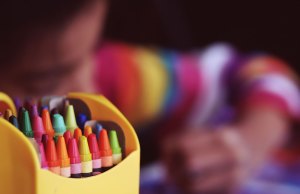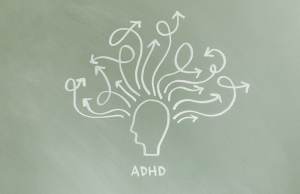
- Attention Deficit Hyperactivity Disorder (ADHD) is a neurodevelopment disorder that affects the attention span, working member, impulses, and other functions.
- Symptoms, which include false perception of time and difficulty staying organized, impair daily functioning in children, at home and at school.
- Despite the obstacles a child with ADHD might face at school, they can succeed; cognitive behavioral therapy (CBT) is often effective in helping children manage their symptoms.
- Parents can also help their child learn better by playing fun games that help them understand and absorb the material; reviewing before bed can also improve retention.
- Additionally, encouraging them to doodle and utilize rhythm (e.g., simply tapping their fingers) can help them learn.
- Finally, if there’s a topic your child takes particular interest in, parents can use that to help them understand and remember other concepts.
Mr. Stevenson is teaching his third grade class about the importance of using manners—he encourages the students to say “please” and “thank you,” as well as “sir” and “ma’am.” Afterwards, he asks the kids in the class to write a few sentences summarizing what they just discussed. McKenzie, though, can’t focus on the task at hand. The more she tries to recall the lesson they just learned, the more distracted she becomes. She tells Mr. Stevenson she’s struggling to complete the assignment.
Attention Deficit Hyperactivity Disorder (ADHD) is a neurodevelopment disorder that affects the attention span, working memory, impulses, and more For younger children, this disorder can have a direct impact on many areas of life, including their performance in school.

ADHD: Causes, Signs, and Symptoms
According to Licensed Psychotherapist and ADHD Certified Clinical Services Provider, Merriam Sarcia Saunders, “ADHD is largely thought to be genetic.” She says there are three different types of ADHD: Inattentive, Hyperactive, or Combined, along with a total of 18 different symptoms, six of which are needed for diagnosis. “The symptoms must be present before age 12 and must occur in at least two settings (home and school, home and work, etc.).” Saunders says that these symptoms must cause impairment to the child’s daily functioning.
Sometimes, the signs and symptoms of ADHD can be hard to spot, while other cases make it an easy disorder to detect. Saunders states that symptoms of ADHD may include:
- Attention deficit when something is uninteresting
- Lack of ability to control impulses
- Inability to have adequate working memory
- Inability to organize and plan
- Lack of understanding the passage of time
- Inability to emotionally regulate
- Inability to transition easily from one activity to the next.
“There are a whole host of things that could cause similar symptoms other than ADHD, so it is important to receive an accurate diagnosis, starting typically with an MD or Developmental Pediatrician and then moving on to a mental health clinician or neuropsychologist.”
Finding the Right Treatment Plan Is Imperative
Not all children with ADHD have the same signs and symptoms, so it is important to remember that the same treatment across the board isn’t always successful. Cognitive behavioral therapy is a great start for a child struggling with ADHD. Treatment plans can be created and modified based on each individual.
While your parenting is not the reason why your child has ADHD, learning how to parent them correctly will be beneficial to the both of you. Dr. Tracy Packiam Alloway—psychology professor and Graduate Program Director at the University of North Florida—has 5 tips to help improve the memory of a child with ADHD:
1. List it.
Alloway explains a game that will prove fun and helpful to your child: “This fun game can increase how quickly children remember things because it keeps the link from our working memory to our long-term memory active. In 10 seconds, list as many vegetables as you can. Try it again, this time list fruits/colors/names, etc.”
2. Learn before snoozing.
Try to get a lesson or some review in before bed. “If children struggle to remember information before a big exam, encourage them to revise before they go to sleep,” Alloway advises. “Studies show that learning just before bedtime can help your memory store all the information safely and allow you to remember it better.”
3. Draw it!
Encourage drawing and doodling. “Studies show that just 20 minutes of drawing can boost working memory,” says Alloway. “So, encourage children to grab a blank piece of paper and some coloring pencils and have fun!”
4. Drum your fingers.
Use rhythm to your benefit to help your child learn. “Rhythm is linked to working memory skills. A simple trick to build up your working memory is to tap your fingers in a rhythm and ask children to remember the sequence of taps,” says Alloway.
5. Connect it.
Finally, hone in on something your child is already interested in and use that subject matter to help them learn something else. “Capitalize on a child’s interest, whether it is about dinosaurs or the solar system and use it to promote learning by creating connections between the new information and something they already know,” Alloway explains.
In summary, there are many ways to help children with ADHD learn and succeed in school. “Keep your child involved in activities that keep their mind growing and learning, and you’ll be sure to see results,” says Alloway.













